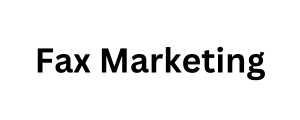Ever dialed a phone number and wondered why it started with 888? You might be surprised to learn it’s not actually an area code like the familiar 212 for New York City or 312 for Chicago. 888 numbers represent something entirely different – a world of toll-free convenience.
Busting the Myth: Understanding Toll-Free Numbers
Imagine needing to reach customer service for a pressing issue, but the fear of long-distance charges holds you back. That’s where toll-free numbers come in. These special phone numbers, often starting with prefixes like 800, 855, and yes, 888, ensure the receiving party (the business) pays for the call, not the caller. This makes them a game-changer for businesses seeking to provide a frictionless customer service experience and build trust with their audience.
Beyond 800: The Rise of 888 Numbers
The story of 888 numbers is intricately linked to the evolution of toll-free communication. As the demand for customer service and nationwide marketing campaigns soared, the original 800 prefix began nearing exhaustion. To address this growing need, the Federal Communications Commission (FCC) introduced additional toll-free prefixes, including 888. Launched in the late 1990s, 888 numbers provided businesses with a readily available and recognizable alternative.
Why Choose an 888 Number? The Perks for Businesses
Businesses contemplating a toll-free number often grapple with the choice between 800 and 888 prefixes. Here’s a breakdown of the key advantages of opting for an 888 number:
Standing Out from the Crowd: With 800 numbers Honduras Email List having been around for longer, finding a memorable and easy-to-dial combination can be a challenge. 888 numbers offer a wider pool of options, allowing businesses to secure a more impactful phone number that resonates with their target audience.
Building Brand Recognition
While 800 numbers hold a strong association with toll-free calling, 888 numbers are gaining significant recognition as well. This growing familiarity, coupled with a unique and catchy combination, can significantly boost brand memorability.
Cost-Effectiveness: Both 800 and 888 numbers function identically from a cost perspective for the caller. The business shoulders the call cost, making it a cost-efficient option for customer service and marketing efforts.
Ringing Red Flags: Avoiding Scams with 888 Numbers
Just like any communication channel, toll-free numbers can be misused for scams. Here’s how to stay vigilant:
- Unfamiliar Callers: Be wary of unsolicited calls, especially from unknown 888 numbers. Legitimate businesses typically outline their contact information on their website or official social media channels.
- High-Pressure Sales Tactics: If the call involves aggressive attempts to pressure you into accepting urgent financial offers, account Cities and Regions Covered by 85 Area Code upgrades, or personal information requests, proceed with extreme caution. Legitimate businesses will prioritize clear communication and address your concerns without resorting to pressure tactics.
- Double-Check and Verify: Don’t hesitate to ask for the company name and website. You can then independently verify the legitimacy of the call by reaching out through the company’s official channels.
By following these tips, you can leverage the convenience of 888 numbers for genuine customer service interactions while safeguarding yourself from potential scams.
Conclusion: 888 Numbers – A Win-Win for Businesses and Callers
888 numbers offer a valuable tool for both businesses and callers. Businesses gain access to a cost-effective and memorable way to connect with their customers, while callers enjoy toll-free access to customer service and information. By understanding the true purpose and advantages of 888 numbers, and remaining vigilant against scams, you can unlock the full potential of this convenient communication method.



